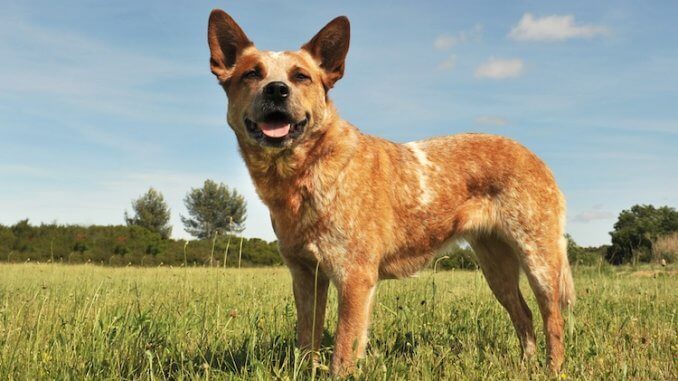
The Red Heeler, perhaps better known as the Australian Cattle Dog, is a herding dog from New South Wales, Australia.
Their nickname of “Heeler” comes from their peculiar method of herding cattle by nipping at their heels.
A superb herding dog, these agile puppies are relatively unique dogs in the United States, but, their popularity is ever-growing and they are ranked #56 globally in all dog breeds.
What is there to know about this cattle dog? Where did they come from? How much exercise do they need? How easy are they to train? Where can you purchase purebred puppies from?
This ultimate guide will provide you with all the answers you need, read on to find out more.
| Size | Males 19-20″ / Females 17-19″ |
| Weight | 33 to 45lb |
| Lifespan | 11 – 15 years |
| Breed Type | Herding Dog |
| Purpose | Cattle Herding |
| Suitable For | Active Adults or Farmers |
| Color Variations | Brown and White Which Gives a Red Appearance |
| Temperament | Clever, Brave, Agile, Smart, Alert |
| Other Names | Australian Cattle Dog, Cattle Dog, Queensland Heeler, Australischer Treibhund |
Red Heeler Dog
The Red Heeler first appeared in the 19th Century when Thomas Hall (a cattle farmer from New South Wales, Australia) bred his herding dogs with tamed dingos to create the first Heelers.
He named this dog Hall’s Heelers.
Upon his death, the breed slowly disappeared, becoming unavailable for purchase. However, a fan of the breed, Robert Kaleski, stepped in and saved them, writing the first known breed standard.
It is unknown when Australian Cattle Dogs first arrived in the United States, but, it is guessed to be around the mid-20th Century.
The Red Heeler is recognized by most major kennel clubs, since 1893 the Heeler has been included in the American Kennel Club’s herding classification.
These dogs are primarily still used as working dogs on cattle ranches across the world; however, they can make excellent family pets too – as long as they are well exercised.
They do not like staying at home without exercise, rather, they love to be active (you can read more about this in our exercise section below).
Red Heeler Puppy
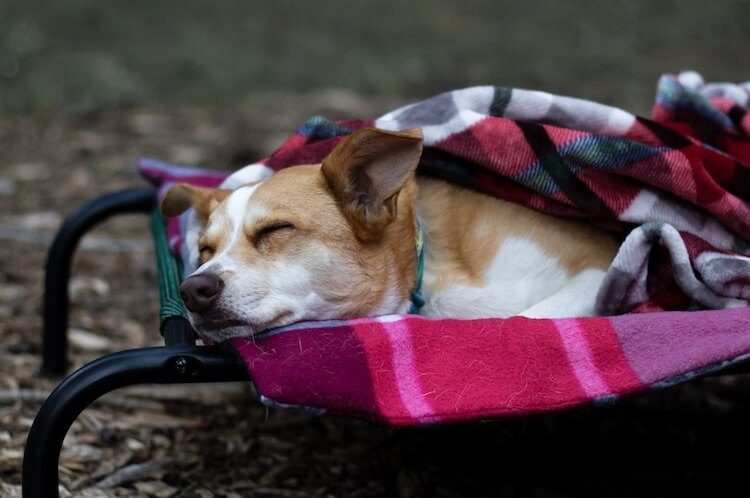
There is a large variability in price of these dogs, with Red Heeler Puppies costing anywhere between $250 and $2,500 USD. The price difference is based on the parent’s pedigree.
A pedigree dog, is a dog which has pedigree parents (dating back four generations or more) all of whom are registered with a kennel club.
On average, a litter will have between 5 and 7 puppies, but a healthy dam can have up to 9 puppies in a litter.
This breed is known to have fertility problems and there are a lot of false pregnancies within this breed group.
Below is an approximate growth chart for your puppy, a couple pounds either side is not a massive cause for concern, however, if your dog massively deviates from the suggested height or weight; a visit to a veterinarian could be a good idea.
| Age | Height(in) | Weight(lb) | Height(in) | Weight(lb) |
| 6 months | 14 | 16 | 14 | 17 |
| 12 months | 16 | 27 | 16 | 25 |
| 18 months | 19 | 35 | 18 | 31 |
Red Heeler Temperament
Despite this, they are incredibly loyal dogs, known to be incredibly protective of their herd, which includes their family.The Australian Cattle Dog is known for its independence and aloofness, they are not a massive fan of cuddling on the sofa.
Their naturally alert nature makes them excellent guard dogs, as they can be very unfriendly with strangers. Beyond alerting you to a stranger on your property with a few low-pitched barks, Red Heelers are not massive barkers.
Red Heelers are known to be naturally destructive dogs, with many undesirable behaviors including barking, chewing, chasing, digging and nipping at heels.
These behaviors can be the result of understimulation or being bored, so be sure to exercise your dog, both physically and mentally.
Is This a Good Family Dog?
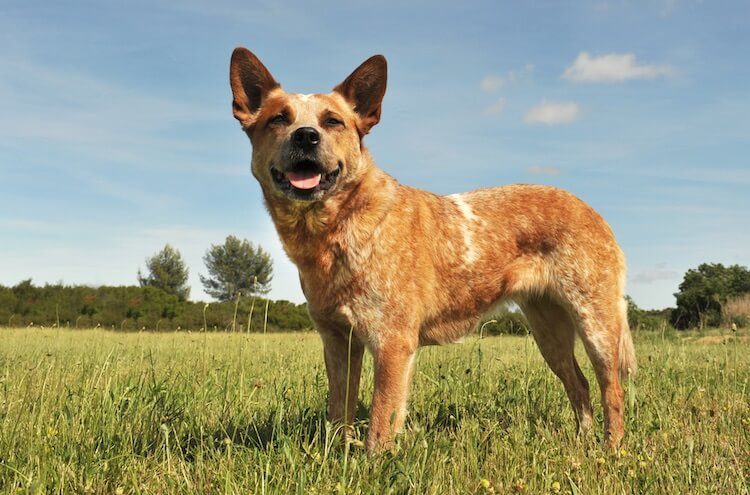
When bored, they may attempt to “heard” family members, especially children.
This consists of nipping people heels and chasing them about the house. This undesirable behavior can be stopped with training. However, a Heeler needs a job, they are a working dog, so you shouldn’t expect them to be a stay-at-home family dog; there are plenty of great family breeds.
These dogs do better when housed with older children as they have a bad habit of herding smaller children, nipping at their heels.
Caring For A Red Heeler (Feeding, Exercise & Training)
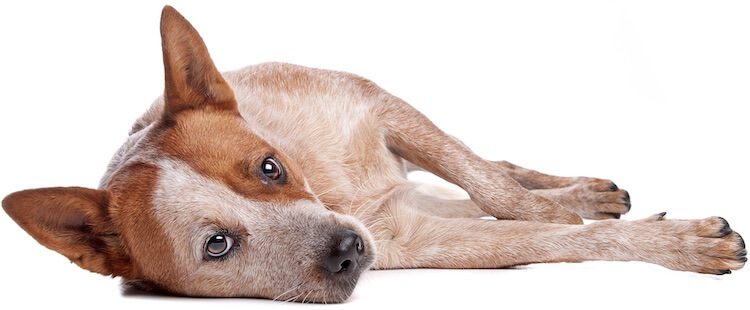
Due to their active nature, Red Heeler dogs are not suitable for owners who are not active.
They need a rigorous exercise regime to stimulate them in both mind and body, a cattle dog should also have access to your garden (when old enough) so they can self-exercise.
Food and Diet Requirements
| Daily Food Consumption | |
|---|---|
| Calories | 1,000 to 1,500 |
| Cups of Kibble | |
An ideal diet for an Australian Cattle Dog will contain around 18% protein and 15% fat.
When they are a puppy, they have slightly higher macronutrient requirements; requiring 22% fat and 8% protein in their diet until they are around two years old.
As they are very active dogs, they require around 30 to 35 calories per pound of body weight.
This means that if you have a dog weighing 40lb, then that dog would need between 1,200 and 1,400 calories daily. This should be split into at least two meals to reduce the risk of bloat.
Working dogs do well on a wet diet, these high protein diets promote excellent muscle growth as well as an excellent coat.
Be sure to check the label on your dog’s food, pick a grain free food and that has meat in its top three ingredients.
Exercising
| Daily Exercise Requirements | |
|---|---|
| Minutes | 90 minutes |
| Activity Level | |
This is a dog with a high exercise drive so will require a lot of exercise.
If you don’t entertain them through exercise they will start to make their own fun in the form of undesirable behaviors, such a barking and chewing.
As a result of this drive the Red Heeler needs around 90 minutes of exercise daily.
These dogs are happiest when they have a job to do, so try getting your dog involved with activities such as flyball or obedience training.
When exercising this dog, it is best to keep them on a long leash. When left to their own devices they can run for miles and they may disappear into the distance unless you have excellent recall.
If you are looking to exercise your dog in an alternative way, that doesn’t involve as much walking, try agility training.
Red Heelers are naturally quick and light on their feet, so these dogs make excellent agility dogs.
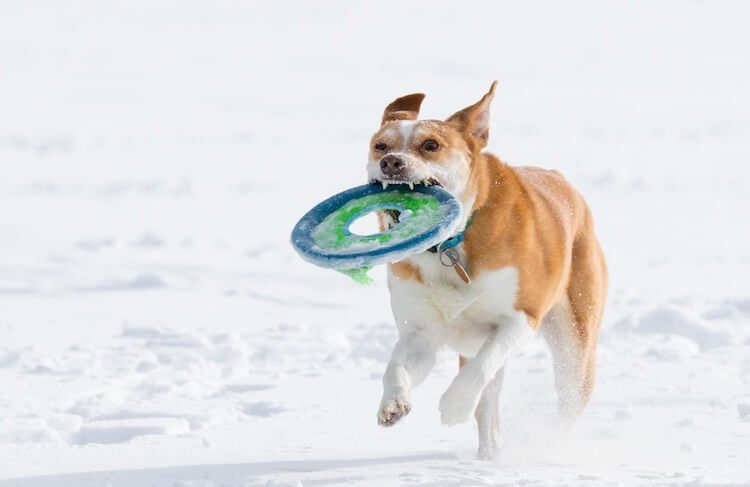
Training
Red Heelers are known for how well they respond to training.
Ever loyal pets, these dogs are always keen to learn new things as well as brush up on old skills. Because of their working heritage, these dogs are quick learners.
They say that you can’t teach an old dog new tricks, but, with the Australian Cattle Dog that is just not true!
These dogs have an incredible drive for learning and remain intelligent throughout their years.
Responding very well to positive reinforcement.
You will find using a method of training such as clicker training will be very beneficial. The sound of the clicker can be heard across the room and is a clear marker of the desired behavior.
In the same way the Red Heelers are suited to agility, they are just as well suited to obedience trials.
Their ability to learn and quickly pick up tricks on the fly means they make first class obedience champions when trained well.
Health Problems
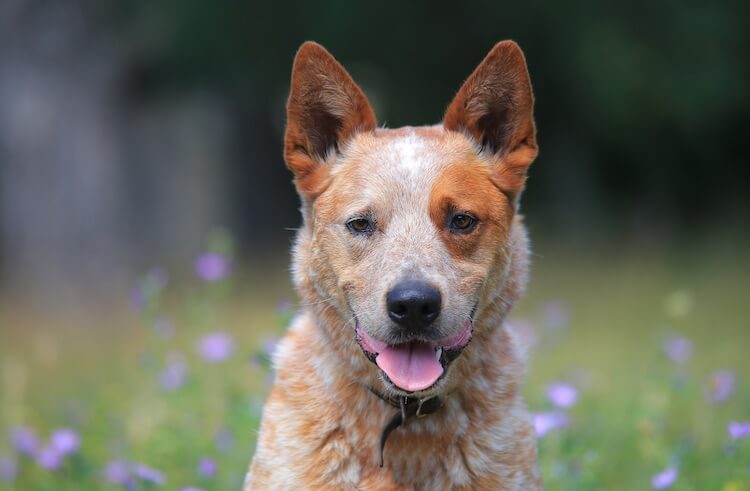
This dog is known to develop an incredibly rare condition known as hereditary polioencephalomyelopathy; a condition affecting the central nervous system of the dog, causing seizures.
As the name indicates, this condition is hereditary so can be tested for in the parents, this is why purebred heritage is very important with this breed.
They may also develop a relatively uncommon condition known as Oesteochondritis Dissecans.
This a developmental inflammatory condition that arises due to cartilage issues, where the cartilage in the joint separates from the bone. This can be in any of the joints in the body but is most commonly seen in the shoulder.
With milder cases, they can be managed with medication, but more severe cases will require surgery to correct.
Hip dysplasia is an uncommon condition in this breed, unless they are used for breeding stock.
These cattle dogs do have a chance of developing blindness, however, this may have a genetic component so it may be possible to test for progressive retinal atrophy in breeding stock.
Red Heeler Color, Appearance, Coat and Grooming
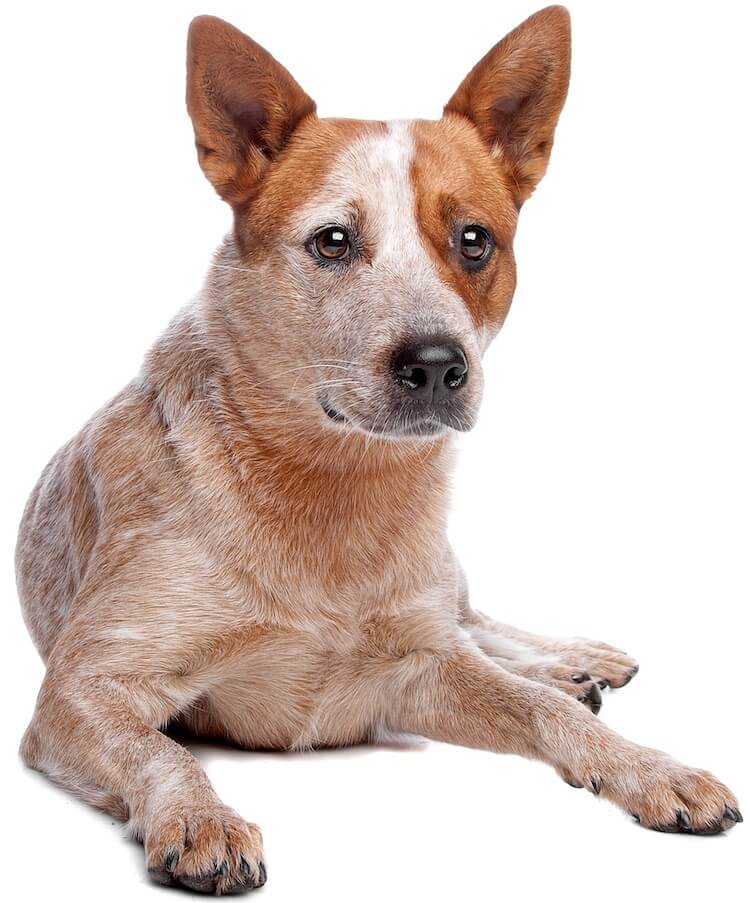
An easily recognizable dog, with its brown hair distributed evenly through a white coat, gives the red appearance.
This breed has a straight, stiff upper coat, with a thick undercoat densely packed with hairs.
When they are puppies Red Heelers are pure white with their brown hairs growing in over time to give them their signature “red” look.
You also get Blue Heelers, who have white coats flecked with gray, giving them a blue appearance.
These dogs are known for their strong quiet demeanor, defined by a muscular, well built body. They have triangular ears, a mesocephalic face and a stocky tail.
The tail is occasionally docked if the animal is working to help prevent accidents.
Grooming a Cattle Dog
These dogs are not year-round shedders, instead having yearly “blow outs” where the seasonal coat comes in causing the other coat to fall out.
Males blow out their coat once yearly and females blow out their coats twice yearly, usually with their heat cycles.
These dogs do not usually require clipping. They may need the occasional bath when they have been running around in the mud but beyond that they have an impeccably easy coat to maintain.
Red Heeler FAQs
- Are Red Heelers Anxious Dogs?
- How Long Does a Red Heeler Live?
- How Much Should a Red Heeler Eat?
- How Fast Can a Red Heeler Run?
- Are Red Heelers Protective of Their Owners?
- Do Red Heelers Shed a lot?
- Do Red Heelers Cuddle?
- Are Red Heelers Hard to Train?
- Are Red Heelers Rare?
- What is the Difference Between a Red Heeler and a Blue Heeler?
- Are Red Heelers More Aggressive Than Blue Heelers?
- Is a Red Heeler a Good Family Dog?
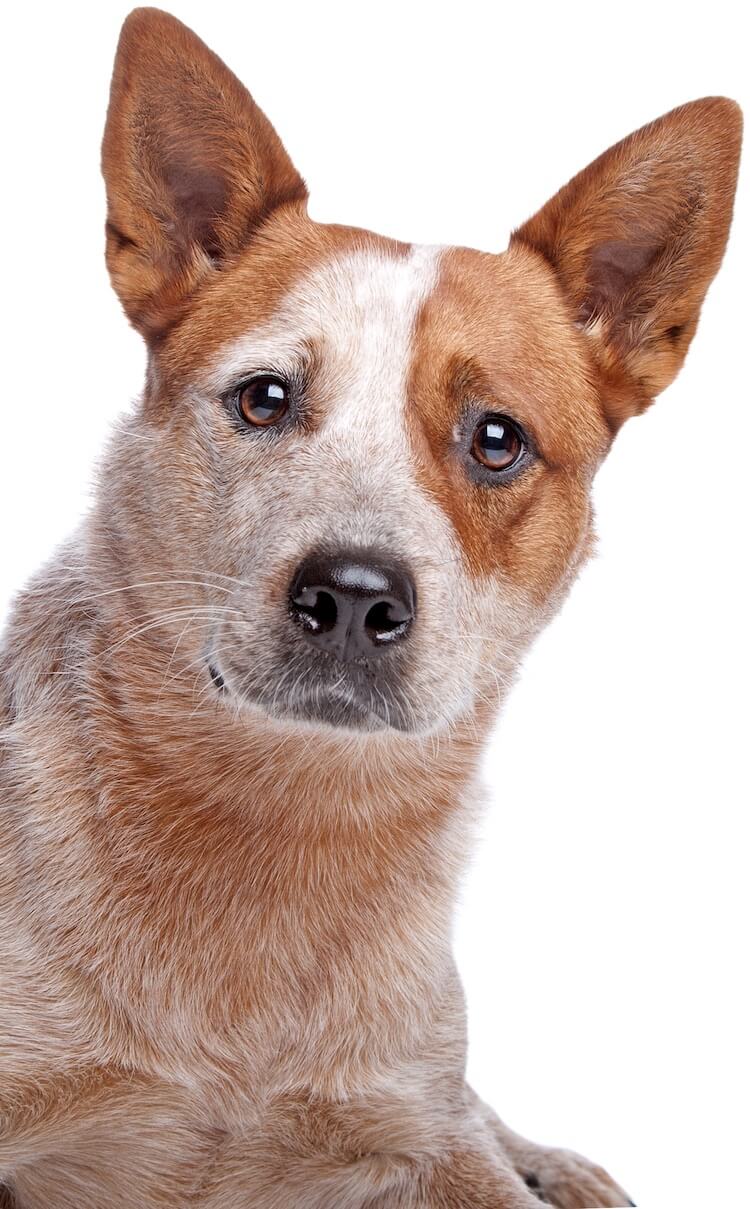
Summary: Should You Get a Red Heeler
This dog will remain loyal their whole life, loving nothing more to be working by your side.
The key to their happiness is exercise and work, as the Red Heeler does not do well with being bored, they need to be outside working to be content with life.
If you are looking for an active herding dog, then this is a great dog.
However, if you live in the city or are looking for a family dog and do not have the time do dedicate to this dog’s exercise schedule, then it is advisable to choose a lower maintenance breed.
Do you have a Red Heeler at home? Are you thinking about getting one? Just a fan of the breed? Tell us your thoughts on this incredible dog in the comments.
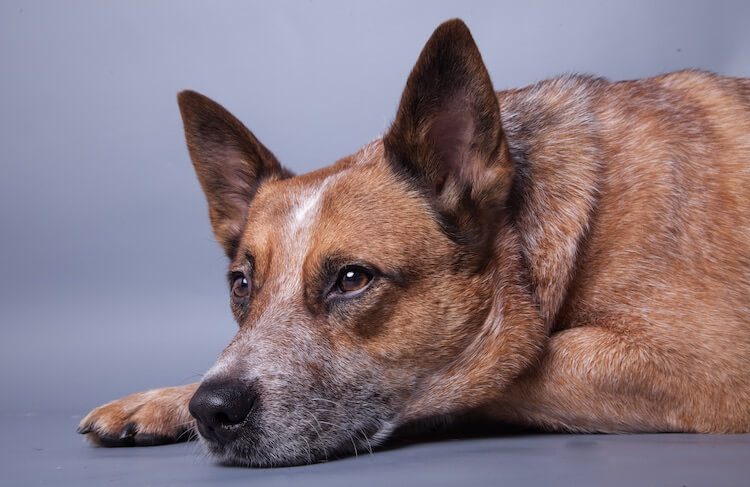

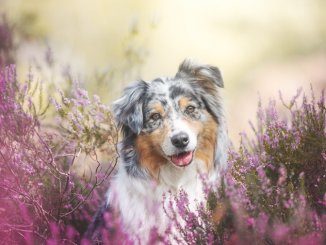
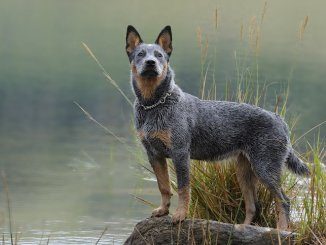
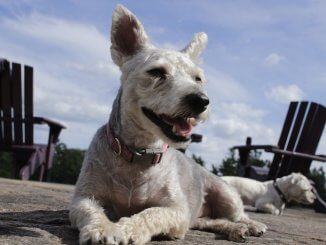
We rescued a Red Heeler at 3 years old. We have had him two years and he is amazing! We RV full time and he gets excited to arrive at a new location. Not sure what his life was like before us, but he quickly became devoted to us! He is so smart it is almost scary!
I also just rescued a 3yr old Red Heeler. He is 1000% energy and smart as hell too! We are both so lucky. He gets about 4-6 hrs dedicated exercise per day. He would accept more, if I gave it to him! LOL
Same here but my female was a year old from a family who didn’t take very good care of her so the breeder took it back and then when I met the dog it just took to me like amazingly! like she excepted me as her only only owner and that was it and this dog is so stupidly smart it’s scary I don’t think I’ll never get any other dogs get in my life they’re awesome and such great watchdogs protecting but not mean and so very quick! I had a large husky attack me and she actually scared that dog to yelping away! Staunch in her protection over me an my family!! We lover so much where I go she goes! Unless to hot out never leave any dog in a car in summer or super cold common sense stuff I think but if you have an active life style definitely and mine cuddles won’t leave my side her name is Bellgha thx Ray Stone…
I agree, ours scares me he learns so quickly! Now we have two Red Heelers both about 1 1/2 years old. Double trouble but excellent dogs. They are very devoted but kind of one or two person dogs, suspicious of strangers. They MUST have exercise. We live on a farm and they are outside most of the day running and rough housing, and they still tend to get bored easily.
We inherited 2 red Heelers from neglectful neighbors. They are both female. They rough house and run most of the day. We live on a crop farm and there is surrounding property of crop farms. They recently have gone to our neighbors house and showed aggressive behavior towards her when she is walking her dog. Does anyone have suggestions as to stop this behavior? They are not leash trained.
Is there any way you can keep them enclosed on your property whilst you address the behavior? Do you know the history of the dogs? When you say aggressive, what do you mean?
Have they had much socialization with other people and dogs? If not, it’s certainly possible to introduce. You would start with counter-conditioning, that is, you work to change how your dogs respond to other people or dogs through positive reinforcement and reward.
Starting from a distance, you introduce what would cause the reaction. Ply the dog with treats, so they associate the stimulus with something good happening. You would slowly get closer providing they have a positive response (ignore, stay calm etc.).
Work with one dog at a time so they don’t pick up on each other’s stress. If you are concerned about their behavior or they pose a risk, it’s essential to keep them under control and seek professional advice.
Ive had healers for over 20 years when I didn’t want my dogs to travel through the fence to get out in the field I put electric fence around there for a short period of time they got to know that the electric fence with the boundary fence there’s no longer an electric fence but they remember what was there and they will not cross the line i had done that because I had a male healer who was aggressive and had gotten over to the neighbours and showed aggression to them The 2 I have now are very friendly in love everybody
We got our red heeler through a rescue nearly 2 years ago. I’m pretty sure she is a mix ,as she is larger than the breed characteristics indicate she should be. She also has a more regal look about her but she is a beautiful dog. Her freckles and red eyelashes really make her adorable. She is very skittish especially around men. Anyway, she is coming around to me and we really enjoy having her in our family.
We got our red heeler when she was 2 months old and is now only 5 months old. She makes me laugh every day! She is incredibly smart and easy to train with treats and a clicker. She does need to be kept busy. I plan on enrolling her in agility training when she’s about 6 months old. We live in the city with a big yard and a dog park nearby. She has plenty of chewable toys available. While not “cuddly” she is attentive and affectionate in her own way. Friends have said that once you have a heeler they will spoil you for any other breed. I am beginning to believe it! We do have an older dog in the house too and she loves him!
We have one we rescued about a year ago. I’m pretty sure he is a mix because of his size. But Dusty looks exactly like all of the pictures we have seen. He is very smart and learns fast -passing his puppy classes with flying colors.. Although he is not very cuddly, Dusty has very good eye contact and is attentive to us. Lately he has become a “talker” to let us know what he wants. We have 8 grandkids that he adores. But they have all learned to “say hello” when they come in. I have had dogs all my life but he is special
I have had two heelers. Both were wonderful dogs. Very loyal and loved me unconditionally. They were great with my boys when they were little. Puppies and little boys need lots of activity and they were perfect for each other. But once grown my heelers bonded to me like nothing I have ever experienced. Best dogs ever.
I rescued a 2yo red heeler who was kept indoors. She was kind of scared at first, but a year later she’s the perfect protector, and would spend all day cuddling me on the couch. She loves me so much that hubby gets barked at if he gets close to me. She’s even jumped between us and nipped his hands. But she seems to love him as long as he keeps his distance. What should I do?
This is more common than you may think, so you are not alone. For the time being, he needs to keep his distance until she accepts that he poses no threat. This can be slow to progress. He just needs to coexist around you and her, from a distance. Slowly getting closer and closer. Him touching you in front of her, is a sure way to raise her stress-levels. Just take it slowly. I’d be reluctant to introduce food or chews to distract, just in case resource guarding then becomes an issue. She just has some new things to learn, and that can take time. Keep unpredictable movements to a minimum and keep her below her threshold where she feels she needs to react. If she gets to the stage she is barking, by him then retreating, she is learning that barking works. So, you just don’t want her to even need to make that connection.
I had Armstrong for 10 years. Three years ago he was diagnosed with Addison’s disease. He has been maintained on steroid supplements since then and is healthy. When we rescued him from the shelter his ears were limp and dragged on the ground. They thought he was a beagle. It has taken me his first five years to figure out his breed. Now his herding, exercise needs and intelligence all make sense. He used to run three hours a day and swim with us another hour each day in our pool. He forgets any disturbance from a minute ago. Lives In the moment. I’m widowed now and live alone. He has been a great companion. He has learned over 50 words or commands and is still learning new ones. Smartest dog I ever owned.
You need to let the dog know that’s unacceptable behavior. The dog will want to please you so you set the boundaries with her. She should never be allowed to show any aggression to your husband. You are the leader, not the dog.
I have a red heeled in NSW Australia. Best dog ever, smart, loyal, protective. As your article says he just wants a job to do and loves just being with me at all times. Super dog. Great article. Very accurate description of Red Heelers.
My daughter recently “inherited” what we are pretty sure he’s a heeler mix. He is stunning! On occasion he tries to “herd” us. He tends to mouth, more when rough housing, but it’s often. He listens to stop, but will start up again. He’s so smart. He’s skittish of the backyard and likes to venture out for just a bit, so a little at a time I guess.
I have a “purple heeler”, red and blue mixed. I have had all male blues until my Jules came along. She is very different than my boys. Jules is the nosiest, she is into every thing. Jules is my girl and I have never had a dog that means a as much as she does. She truly has my heart.
I am looking into a carreer change and would like to become a dog trainer and I would love to start off with my very own dig to train and go to obedience school and learn and grow with me through my carreer change. Reading this is making me believe this might be a good breed to have by my side. This dog would nit only be part of the family but also my partner for work wich will keep hin plenty happy because he will be in a vonstant leaening environment!
I rescued a red that was thrown over a concertina topped fence in the country. No one knows how long he was there, but he nearly starved. The family that owned the property found and nurtured him back to health and then passed him to us.
We didn’t know anything about red heelers, but had a blue heeler for 18 years. They are as different as night and day. This red has all the traits listed here except that he almost demands attention – i think the rescuers kids “mothered” him and that’s the behavior he want people to exhibit.
We are close to 70 and he’s too busy for us and will never get enough exercise in our household. I’ve had dogs life long and have never used dogs for anything but company and companionship – so was never a big “trainer.” Paying for it now because I have neither the time nor patience to properly train this dog.
We are looking for a good home for him. We live in west Austin, Texas near Dripping Springs. This dog would be great on a place with acreage – he’d exercise himself, but he does want to be with his people.
If you have an interest contact us. 903-235-0163 David Smith [email protected]
We don’t want and $$’s – just a good home. He is about 12 months old – we think.
I went to visit my brother last weekend and he had a smallish, 18-month-old short-haired dog I took to be a half-coyote and which I didn’t trust due his extremely quick darting about his half-acre yard and “wild” overall appearance. Guess what it was. First time I had been made aware of a Red-spotted Heeler.
When I got to understand him I determined he was one of the best dogs I had ever been around. VERY responsive to commands considering that he had just met me (I’m 70-year-old male and have been around dogs quite a bit, and know what they’re about and how to handle and command them) and I could easily see his herding instincts. Too bad about me being old and with nice furniture, and a tiny patio for a yard.
Red Heelers are awesome dogs to own. My Hunter left this world way to soon. 2yrs 11months. The best friend. companion.I’ve had. One owner dog. Very protective dog. I would get another one in time. Very loving loyal animal. R I P Hunter I will always love you.
I have a 10 month old male healers very friendly and love everyone he love chasing after his ball but he doesn’t bark when someone come around I really wish he would what can I do?
Give him time, he probably will become more vocal in time once he gets older and more bonded and protective of you/your family and his territory.
Rescued an 18 month old Red Heeler/Great Pyr 2 mos. ago. She is great. Active is right. Zoomies give her some exercise but running in the back with our neighbors Labradoodle helps a lot. The are both 60 lbs. I have had a German bred GSD and also a Shepherd/Kees and she is just as smart and lovable but now I am 76. Going to take a lot more training and patience before I can take her for a walk on the street. Any hints. Renee
We rescued an 11 year old male Red Heeler two years ago after having had a Red Cloud Kelpie and a Blue Heeler for 17 years. He was found living on the streets after having been abandoned and then spent seven months in the pound. He had been abused by who ever abandoned him and it has taken him a long time to start to heal from those emotional wounds – some he never will. Your article is him to a tee and he is so protective of his new family. So glad we crossed paths and will be devastated when he is no longer with us.
HiI have a 11year old red heeler and had him at 6months old.I am moving into a unit in a retirement village we’re we can have pets and my sister is worried about when I go to work it will keep on barking.What should I do as I love him so much and could not have a better dog since my husband passed away six years ago.
I lost my red healer 2 months ago.
Rectal disease. He was 10 years old. He came unexpectedly into my life at age 4. Rescued from the streets by a neighbor. Zephyr I called him. for his simply amazing gentelness. A gental breeze.
Of course, he was extremely cautious of me for about 8 months and litterley chewed up any tin can until it looked like it had been shot with a shot gun. It took many years for him to stop that behavior and he was very well cared for and loved by me. I was his person.
Zephyer had been abused, neglected and probably kicked very hard in his back hip. It was heartbreaking to hear him whimper if you picked up a garden hose or electrical cord. I could not understand such crulet to an animal but know it to be a truth in life.
Zephyr was so well loved by me and by neighbors
And I miss hihim every day and night.
I am in my early 70s and have started to think of adopting another healer, an older one, once I find him or her. I knew right from the start that heelers were meant for me, and I have many dogs before my Zdog.
I will soon start my search through rescue organizations.
Heelers, such special friends to have in your life.
We rescued a brother and sister red heelers, and named them Bonnie and Clyde. It’s nice because we have a big backyard and they heard and chase each other for exercise.